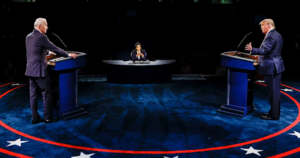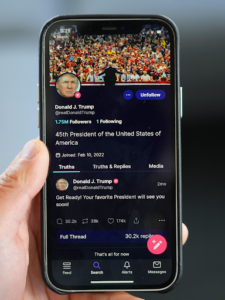As the world starts another new year, many remain on edge for the 2024 Presidential Election looming in November. Trends, polls, voter demographics and analyses have already swept national headlines as the country braces for a narrow political landscape.
Contending presidential candidates have started the beginning of many rallies, meetings and events as both the Democratic Party and the Republican Party hit the campaign trail, vying for control of the White House.
On Monday, Jan. 8, President Joe Biden attempted to rally his voter base with a recent trip to Mother Emanuel AME Church in Charleston, South Carolina.
The trip to the Charleston church seems to be a desperate attempt to reconnect, or at the very least, bring back into the fold, many non-White voters who have departed from President Biden as a potential candidate choice.
Biden held a speech centered around a similar talking point: the supposed danger of widespread white supremacy in America.
“That’s ‘white supremacy,’ he said, the view by some whites that they are superior to other races. ‘It is a poison, throughout our history, that’s ripped this nation apart. This has no place in America. Not today, tomorrow or ever’” according to ABC News.
Over the past few years, the Democratic Party has seen a decreasing trend of votes among minority voters, especially during the Biden administration.
Not only does this negative trend track among Black voters, but there also seems to be a decrease in votes among the Latino voter base, with many aligning to former President Donald Trump in 2020 instead.
“Research by Catalist, a Democratic voter targeting firm whose analyses are respected in both parties, found that Trump’s vote among Latino voters without a college degree spiked from 61% in 2016 to 72% in 2020; Trump also enjoyed a modest 3 percentage point gain among Black voters without a college degree over that period, Catalist found,” according to CNN.
While minority votes increased drastically in the GOP’s favor in 2020, non-White votes stalled for the party in 2022. However, some analysts, despite the stall in 2022, predict potential rightward shifts in upcoming elections among Latino voters, which seems plausible after President Biden’s visit to South Carolina for his Black voter base, signaling a much larger disconnection the Democratic Party might have with minority voters as a whole.
“Democrats can only take so much comfort from their 2022 success among minority voters, particularly those without college degrees. The reason, he says, is that the openness toward Trump and the GOP has been most pronounced among economically marginal Latino voters who are largely disconnected from the political system and much less likely to turn out in a midterm than presidential year election.
“‘So much of the dynamism and volatility in the Latino vote is among less frequent voters,’ Odio said. ‘So in important ways, you almost have to clear 2022 out of your mind.’ Some Democratic strategists who focus on Black voters believe the same is true in that community,” according to CNN.
One of the biggest factors of hostility towards the Democratic Party and President Biden among minority voters is Biden’s controversial and tumultuous handling of the U.S. economy.
“Democrats are accustomed to winning at least 7 in 10 minority voters in presidential elections; even if inflation continues to subside, it seems highly unlikely by Election Day that 7 in 10 minority voters will put more faith in Biden than a Republican to manage the economy,” according to CNN.
It seems President Biden’s track record is going to speak for itself among minority voters, as the entire national voter base makes their voices heard in a presidential election poised to be one of the narrowest in the United States.











Be First to Comment